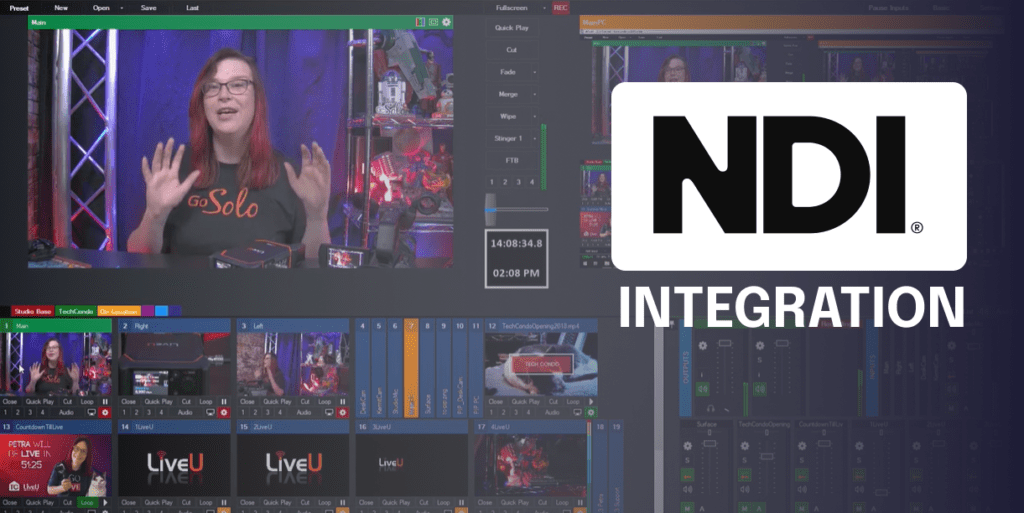The Powerful Synergy Between NDI and LiveU in Live Broadcasting
By Daniel Pisarski, CTO, LiveU

Since its introduction in 2015, NDI (Network Device Interface) has rapidly evolved, and LiveU was quick to recognize its potential. We saw the promise of NDI, as a very simple to configure IP protocol for local interconnectivity – something that didn’t really exist at that time. We adopted NDI as an output format for our receive servers, such as the LU2000 and LU4000, enabling broadcasters to inject highly reliable video contributions from the field into IP workflows. With our proprietary protocol, LiveU Reliable Transport (LRT™), broadcasters could transmit live video content over cellular networks while benefiting from the simplicity and efficiency of NDI for IP video transmission.
NDI’s Growing Influence in Broadcast Workflows
Initially, NDI found popularity in Pro-AV, live streaming and houses of worship, but it has since gained significant traction in live broadcast environments like sports and news. The COVID-19 pandemic accelerated the adoption of NDI, as it became an ideal protocol for cloud-based workflows, where systems needed to interconnect within a virtual private cloud. Broadcasters recognized the advantages of NDI, including its scalability and ability to enable remote productions.
Big Broadcasters Increasingly Adopting NDI
Although NDI has been transformative, some larger broadcasters were cautious about adopting the protocol, partly because of its competition with more traditional standards like SMPTE. Big broadcasters naturally tend to be later adopters of new technology as a result of being more risk averse and having longer-term investments in legacy systems. However, as NDI has evolved to support cloud workflows and gained wider industry support, these broadcasters are now increasingly exploring its potential.
The Appeal of NDI for Broadcasters
At present, NDI remains the only widely-adopted, low-latency, lossless quality protocol suitable for private clouds. While alternatives like JPEG XS are emerging, NDI’s widespread support, ease of use, and cost-effectiveness make it a preferred option for cloud production. For broadcasters increasingly looking to run workloads in virtual private clouds, the ability to seamlessly integrate contribution methods like our bonded cellular technology with interconnect solutions such as NDI, is essential.
Why Broadcast Manufacturers Are Adopting NDI
Broadcast technology companies, including LiveU, understand the importance of helping broadcasters operate more efficiently while managing tighter budgets. As broadcasters increasingly rely on the cloud, they need a few key components to power their workflows: ground-to-cloud video contribution, where we excel, and component interconnection with in-cloud networking, where NDI stands out.
The Pandemic’s Impact on Remote Broadcast Workflows
The onset of the pandemic forced broadcasters to rethink their workflows, with many unable to access their facilities or use traditional field contribution methods. The cloud became a critical solution, enabling broadcasters to continue producing content despite the challenges. LiveU played a pivotal role in this transition, with LRT as the ground-to-cloud solution and NDI serving as the in-cloud interconnect. This combination allowed broadcasters to remain agile and continue operations in challenging circumstances, and the lessons learned – such as the benefits of elastic scaling and remote production – have become integral to modern broadcasting workflows.
The synergy between LiveU and NDI has transformed live broadcasting, offering broadcasters the flexibility to scale operations, improve efficiency, and embrace cloud-based workflows. This powerful combination is poised to drive even greater innovation in live broadcasting as more broadcasters integrate NDI into their operations.
LiveU’s longstanding integration with NDI

